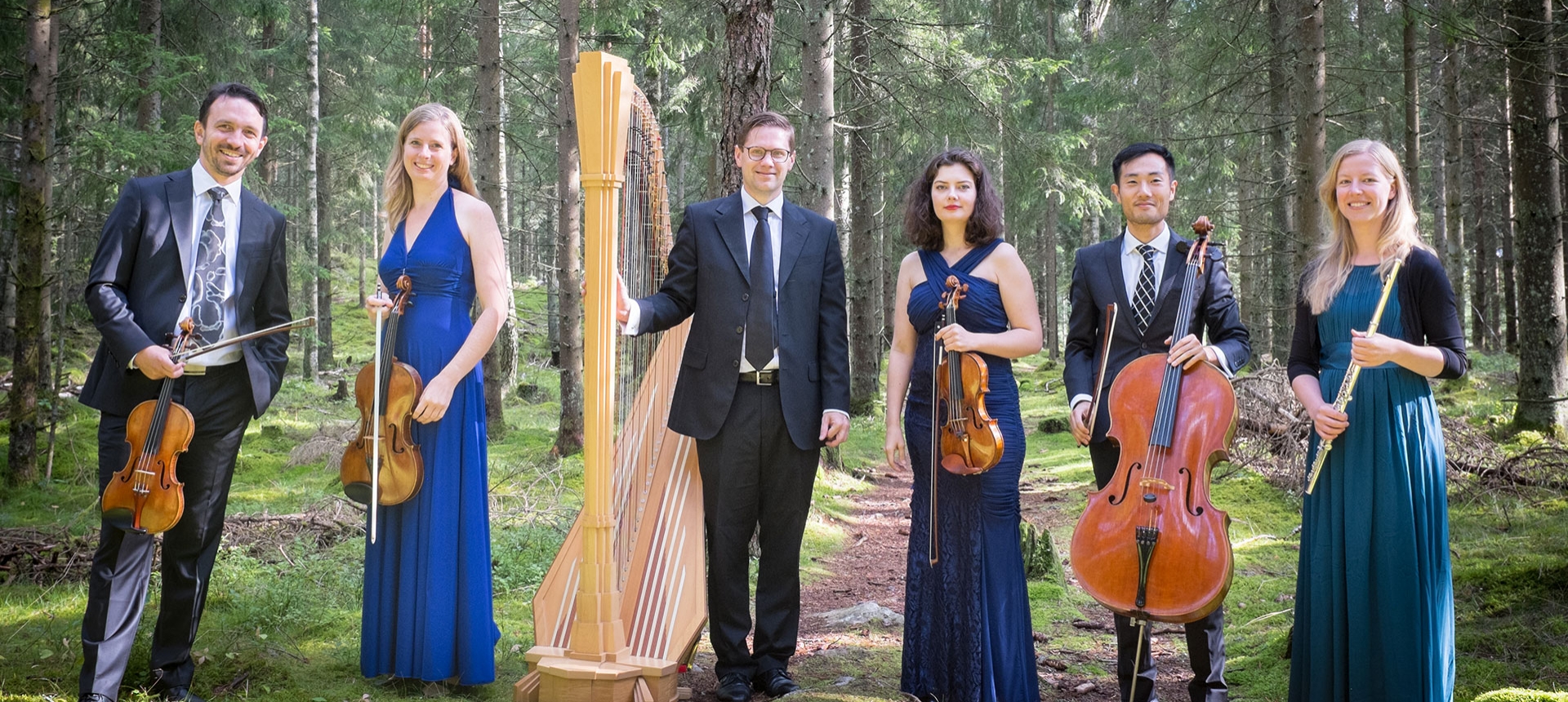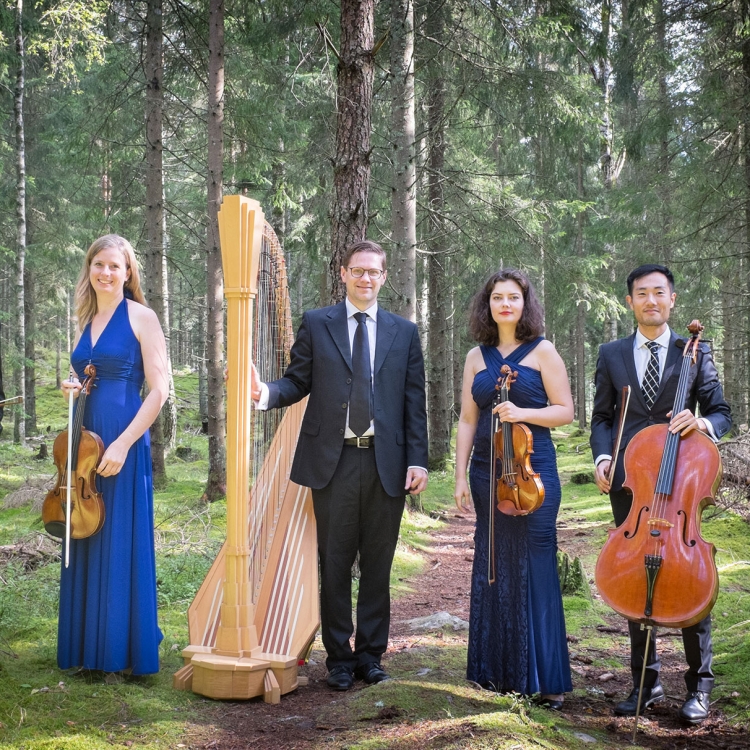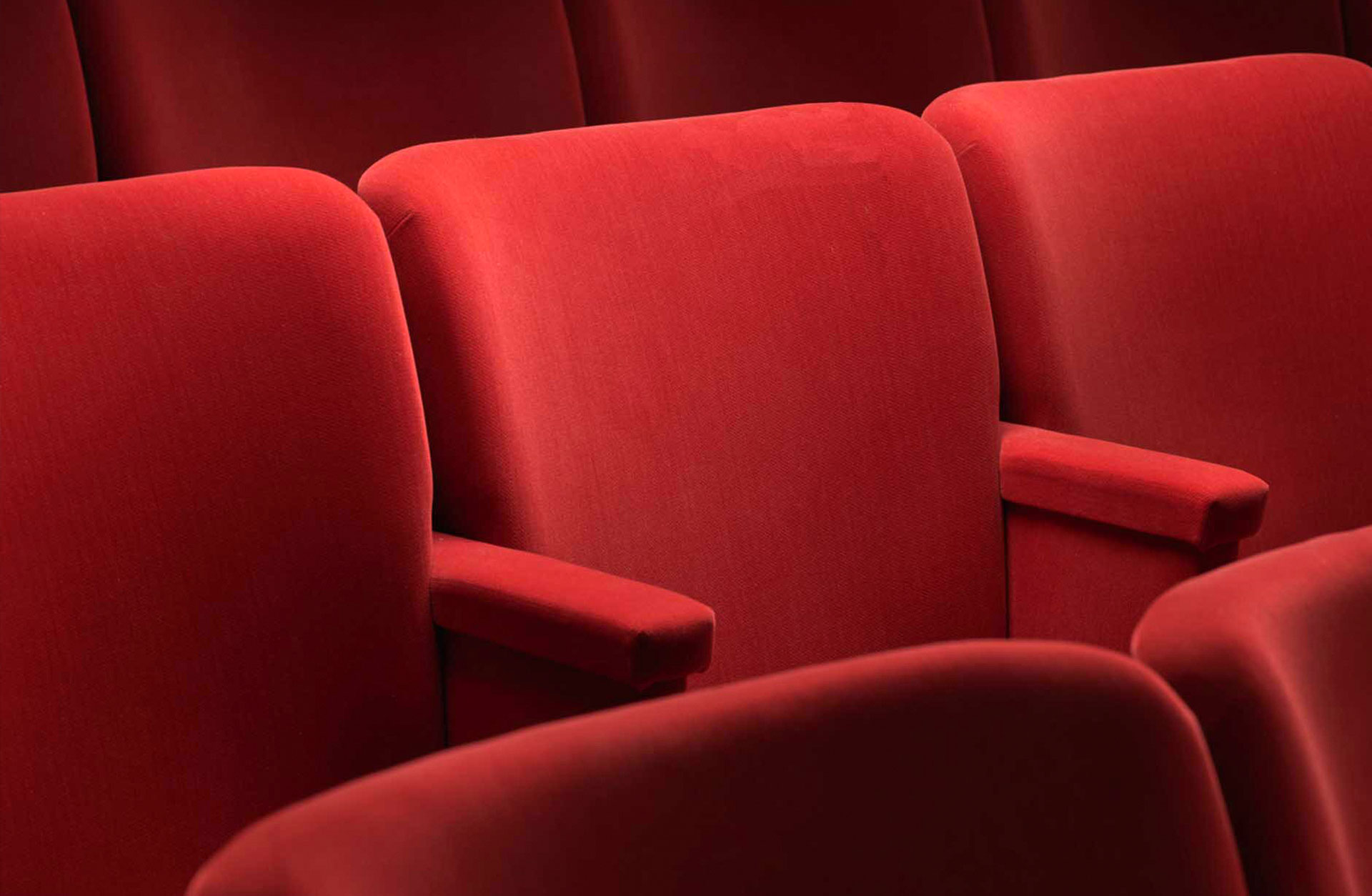Cart
Your cart is empty
Your cart is empty
List is empty
Press ESC to close the search field



Event has already taken place. Musicians from the Gothenburg Symphony Orchestra treat us to some of the most beautiful music ever written for a string quartet, flute and harp.
In orchestral music the harp is used as a short cut to heaven. The Ensemble Caplet allows the instrument to truly do itself justice, and the range is incredible on this occasion as tones of Sibelius and Jongen meet completely new music by Andrea Tarrodi. In this concert, musicians from the Gothenburg Symphony Orchestra treat us to some of the most beautiful music ever written for a string quartet, flute and harp.
The Ensemble Caplet includes composer Pierre Guis, who has written a suite for the group. The third movement is inspired by a Japanese haiku about the volatility of everything. Andrea Tarrodi is one of Sweden’s most successful composers at present, and her works for the Ensemble Caplet are performed for the first time during this concert. The older music of French composer Jean Cras and Belgian composer Joseph Jongen represent impressionism when it is at its most dreamy, while Sibelius’ Suite Caractéristique is so high-spirited that you can almost hear the champagne flowing!
Get to know the classical pieces.

Here you will find all the necessary information that you need to know about before your magical visit in the Concert Hall.
Invite yourself or someone you like to an experience for all the senses. Welcome to visit the Concert Hall's restaurant or one of our foyer bars.